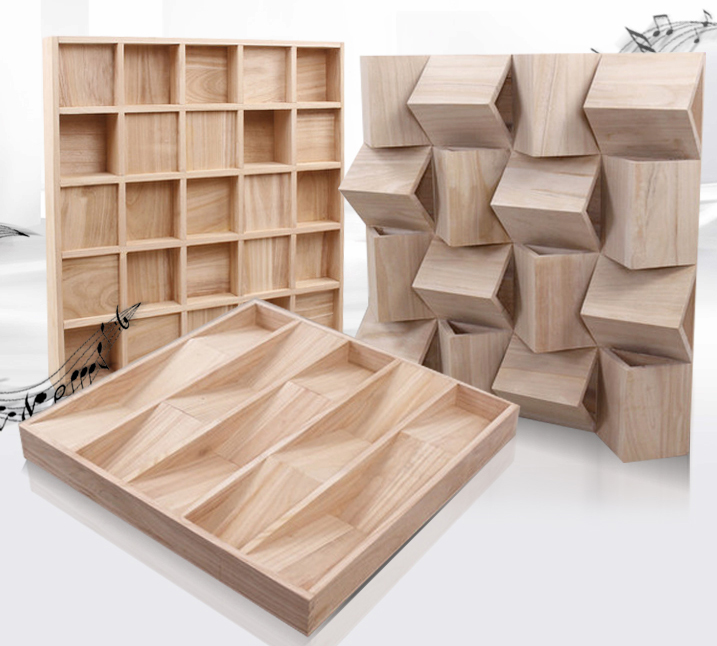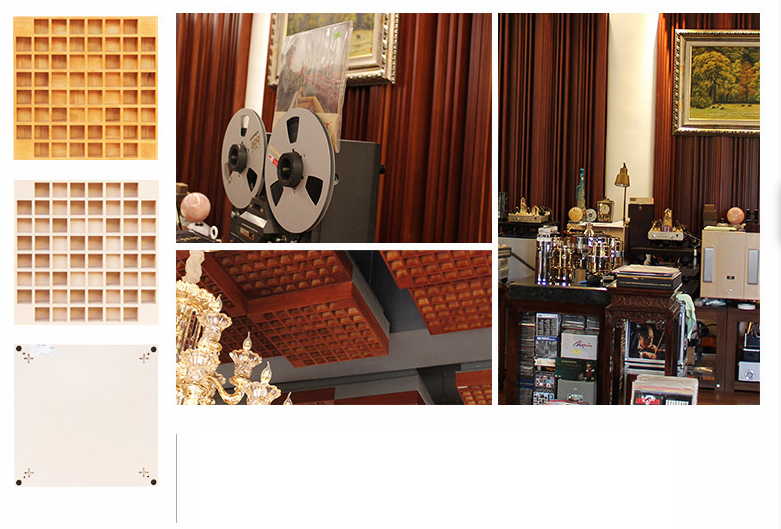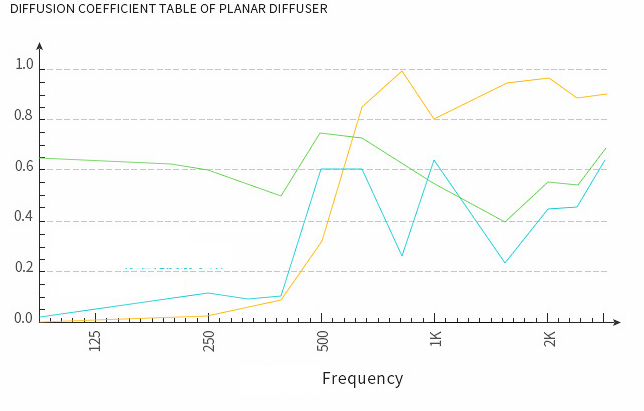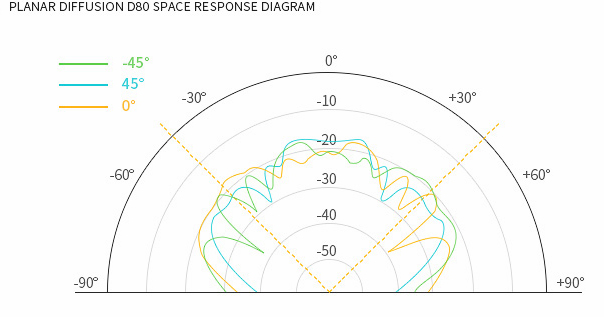wooden Sound Diffuser
กก
The sound diffusion is
unfortunately neglected as an acoustic measure. It is diffusion of the
effect and implementation, much more "relaxed" and easier,
as
absorption. In contrast to absorbers, too many diffusers can not be used
even without measurements, and as a result errors in the acoustic
optimization can be made.
ACOUSTIC DIFFUSER • EFFECT & FUNCTION
Diffuser QRD 7 folded / listening room space-saving acoustics
A diffuser should disperse the incident sound as evenly as possible.
Although sound descriptions are always subjective, diffusers increase
the liveliness and
spaciousness of many listeners. The sound is more
believable, softer, more natural and less "sharp" in the higher
frequency range. The best possible
uniform distribution of the sound
field brings the "analog" into the sound.
Diffused scattered the time course of the reverberation is less of
individual discrete / sharp reflections, but from many who decrease
evenly in their intensity.
The resulting fragmentation of the previously
bundled reflections has little to do with the overall length of the
reverberation. As long as a diffuser does
not act as an absorber through
porous material (e.g., Styrofoam / EPS), or resonates with too thin
plywood, the reverberation time remains nearly
unchanged. This point is
often misunderstood in the diffusion:

• The basis of the room acoustics remains the reverberation time created
by the absorbers. However, the length of the reverberation time says
nothing about the quality of the composition of the reverberation. •

The statement "The ratio of absorption to diffusion must be right" is a
persistent myth. Since the absorption is limited, the diffusion would
have to be limited accordingly. For the remaining areas correspondingly
smooth walls would be the acoustic optimum! A listening room equipped
with many diffuse scattering surfaces does not lead to a "diffuse sound
mash", but to a more even distribution of the sound intensity in the
room.
Diffusers, like a loudspeaker, can not add extra sound energy to
the room. The quality of the existing reverberation is improved, the
reflections
arrive chopped and later on the ear. The effect of a wrong
directional localization caused by strong discrete reflections
(phantom
sound sources) is reduced. The temporally even decreasing reverberation
flag is perceived as more natural and pleasant.

The positive influence on the acoustics is due to changes in the time
domain, the intensity and the direction.
Often in diffusion only the icing on the cake of the room acoustics is
spoken, which I think is a mistake. Almost all sound engineers confirm
the positive
influence of diffusers and like to use them. Even classical
music halls are not only for visual reasons with numerous decorations
provided.
The "White Skin" of the Hamburg Elbphilharmonie is an
extremely large-scale diffuser and proves that such a room can also
sound very clear /
detailed / analytical. A good diffusion of a
listening room makes a really relaxed listening to music possible. You
do not drink gin and tonic

without ice. A good sound diffusion is
therefore at least as important for a first-class music reproduction as
the absorption.
Disadvantages are undoubtedly the not inconsiderable
costs for good diffusers.
กก
กก